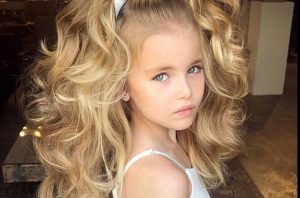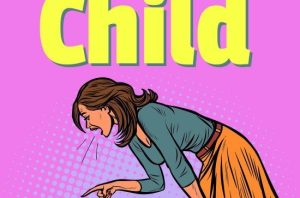Here is a super cute video of a mom having fun with her daughter.
Studies show that Dance is a great way to connect with your little one.
Anthropological studies of traditional African and Asian societies often describe group interaction with babies, specifically, passing around of the baby to all group members in a warm, playful, rhythmic pattern of “touching dance”. For example, tribes such as the Nso of Cameroon provide a great deal of body stimulation by consistently rocking and lifting the baby up and down while making eye contact. In contrast, it is sometimes noted that Western cultures place a stronger emphasis on autonomy and the capacity to self-regulate arousal and emotion, with parents often advised to avoid too much physical contact such that babies learn to self-regulate. Interestingly, it has been shown that children from more traditional cultures tend to sit and walk sooner than their peers from the West.
Furthermore, movement is essential – it facilitates the circulation of cerebrospinal fluid, which in turn affects perfusion in the brain and activates other neuroprotective factors (Feinberg & Mark, 1987). It also promotes bone growth.
When learning to speak, complex movements need to be coordinated and we need to remember words and grammar. This is why at around six to twelve months of age, babies increasingly direct their gaze on the speaker’s mouth, not eyes. Doherty suggests that holding your baby closely and dancing or moving with them, particularly in poses such as, “Over the Heart Embrace”, which is good for eye contact and close scanning of the face, allows them to focus their attention on your mouth and facial muscles and imitate those actions.
Historically, music has been used for healing and promoting wellness. Music’s healing properties were celebrated as far back as the 6th Century, with the mathematician and philosopher Pythagorus prescribing music as medicine, claiming that the laws of harmony inherent in music could be harnessed to restore harmony to the human mind, body and soul.
For babies, the musical component of interactive movement and dance routines provides them with stimulating rhythm and enveloping personal touch that may have a profound effect on their development.
Sympathetic to the stressful moments experienced in early parenthood, Doherty discusses the role of a dance and movement routine in relieving stress for both caregivers as well as babies. Doherty argues that excessive caregiver stress can affect your baby’s ability to form a proper attachment; as a result baby-caregiver relationship may suffer. A study by Meaney and colleagues (2006) observed significantly lower licking and grooming behaviors in rat mothers who experienced greater gestational stress. In turn, their offspring demonstrated increased levels of behavioral anxiety, were more fearful and sensitive to stress. Doherty reviews evidence which suggests that exercise can increases positive affect and reduce stress.
Doherty’s review of the scientific literature is infused with countless practical tips on how to incorporate dynamic dance and movement routines into daily life and how to make adjustments that fit the needs of you and your child.
Checkout this duo
Here’s another super fun to try with the kids





